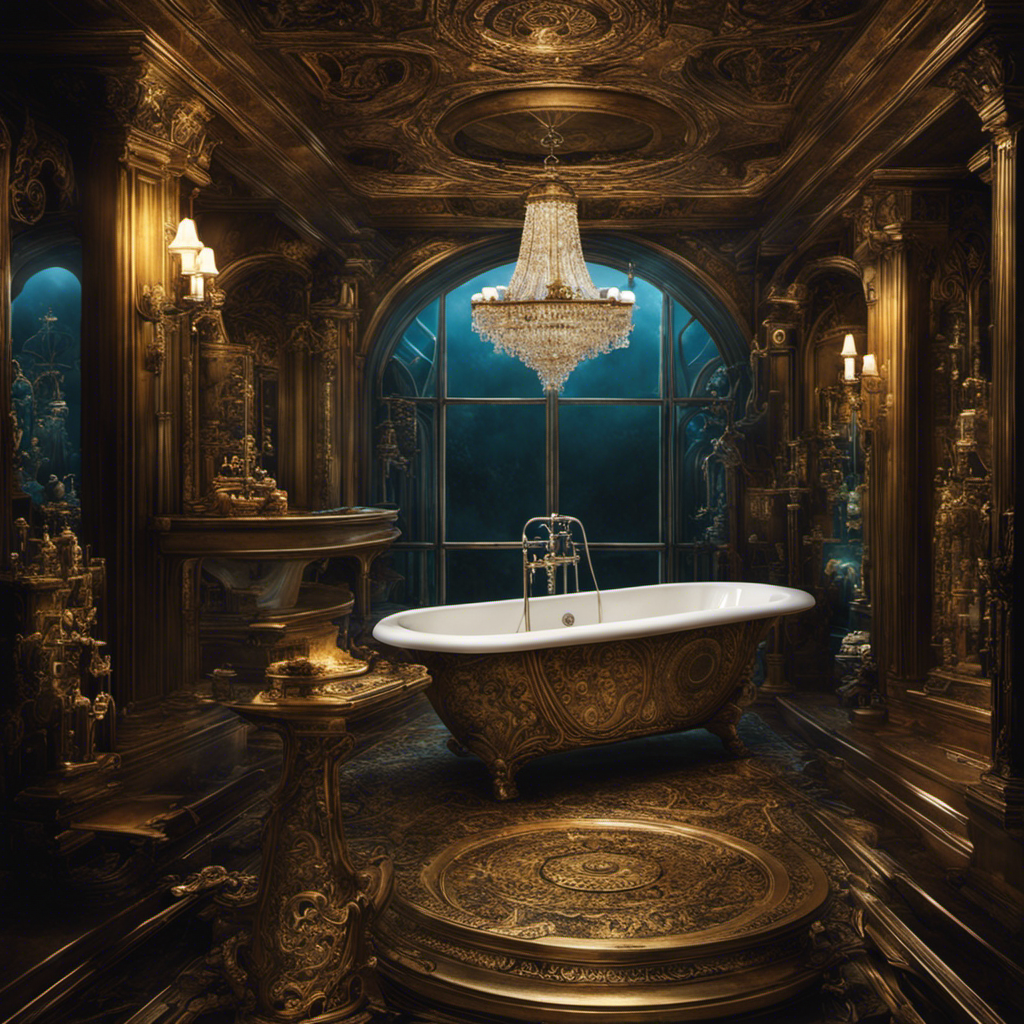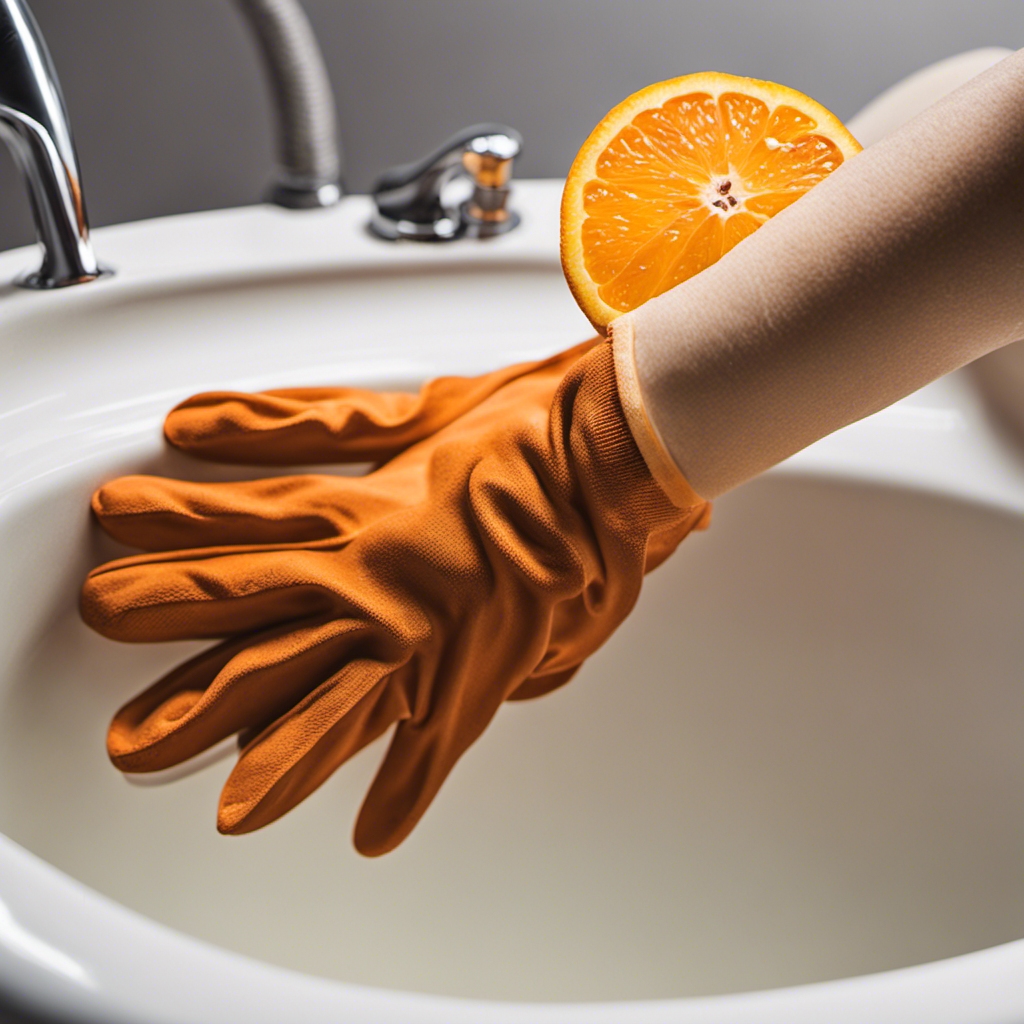Do you know what lies beneath your bathtub? You might be surprised to learn that there is more than just a simple floor underneath. In fact, there are several structural components, plumbing and drainage systems, support and framing, insulation and soundproofing, as well as waterproofing and sealing.
Understanding what is under your bathtub can help you with maintenance and repairs. So, let’s dive into the intricate world beneath your tub and explore the hidden wonders that keep it sturdy and functional.
Key Takeaways
- The support frame and subfloor are essential structural components of a bathtub, providing stability and weight distribution.
- The plumbing and drainage system ensure proper water flow in and out of the tub, and regular cleaning and maintenance are necessary to prevent clogs and leaks.
- Support beams and floor reinforcement play a crucial role in maintaining the stability of the bathtub, and the selection of strong and durable materials is important.
- Insulation, soundproofing, waterproofing, and sealing are important aspects of bathtub construction, ensuring water temperature maintenance, noise reduction, and prevention of water leakage and damage.
Structural Components
You’ll need to examine the structural components under your bathtub to determine what is underneath it. The structural integrity of your bathtub depends on the materials used and how they are assembled.
The main components you should look for are the support frame and the subfloor. The support frame provides stability and distributes the weight of the bathtub evenly. It is typically made of wood or metal and should be securely attached to the subfloor.
The subfloor, on the other hand, is the foundation on which the bathtub rests. It is usually made of plywood or concrete and should be strong enough to support the weight of the bathtub and its occupants.
Proper material selection and installation are crucial to ensure the structural integrity of your bathtub.
Plumbing and Drainage System
There’s a plumbing and drainage system that is typically installed beneath your bathtub. This system is responsible for the proper flow of water in and out of your tub. The plumbing maintenance of this system is crucial to ensure that it functions properly and prevents any common drainage issues.
One common problem is clogging, which can occur due to hair, soap scum, or foreign objects. Regularly cleaning the drain and using a drain cover can help prevent clogs.
Another issue is leaks, which can be caused by worn-out gaskets or loose connections. It is important to check for any signs of leaks and address them promptly to prevent water damage.
Lastly, improper venting can lead to slow drainage or gurgling sounds. Ensuring proper venting can help maintain the efficiency of your bathtub’s drainage system.
Regular plumbing maintenance can help prevent these common drainage issues and keep your bathtub functioning smoothly.
Support and Framing
To ensure the stability of your bathtub, it’s important to have proper support and framing in place. This ensures that your bathtub remains securely in position and doesn’t sag or shift over time. Here’s what you need to know about supporting your bathtub:
- Support beams: These are horizontal beams that provide structural support to the bottom of the bathtub.
- Floor reinforcement: Reinforcing the floor beneath the bathtub helps distribute the weight evenly and prevents any potential damage or sagging.
- Proper spacing: Ensuring the support beams are evenly spaced helps maintain the bathtub’s stability and prevents any potential issues in the future.
- Material selection: Choosing strong and durable materials for the support beams and framing is crucial for long-lasting stability.
- Professional installation: It’s recommended to have a professional install the support beams and framing to ensure proper placement and stability.
With the support and framing in place, the next aspect to consider is insulation and soundproofing, which will enhance your bathing experience.
Insulation and Soundproofing
Once the support and framing are in place, it’s important to consider insulation and soundproofing to enhance your bathing experience.
Insulation types play a crucial role in maintaining the water temperature and preventing heat loss. Two common types of insulation used under bathtubs are fiberglass batts and spray foam insulation.
Fiberglass batts are easy to install, affordable, and provide good thermal resistance. On the other hand, spray foam insulation offers superior insulation properties, as it expands and fills all gaps, providing a seamless barrier against heat loss.
When it comes to soundproofing materials, there are various options available. Mass loaded vinyl (MLV) and acoustic foam are commonly used to reduce noise transmission.
MLV is a dense material that blocks sound waves, while acoustic foam absorbs sound and reduces echoes.
Incorporating these insulation and soundproofing materials will ensure a peaceful and comfortable bathing experience.
Waterproofing and Sealing
When waterproofing and sealing a bathroom, it’s essential to use a high-quality sealant to prevent water damage. There are several waterproofing techniques and common sealing materials available to ensure a watertight and durable bathroom. Here are some important considerations:
-
Waterproofing techniques: Employing effective waterproofing techniques, such as using a waterproof membrane or cementitious coating, can create a barrier against water penetration.
-
Common sealing materials: Silicone, polyurethane, and epoxy are commonly used sealants for bathroom waterproofing. These materials offer excellent adhesion, flexibility, and resistance to water and chemicals.
-
Sealing joints and corners: Pay special attention to joints and corners where water may seep through. Apply sealant generously to create a strong, watertight seal.
-
Proper surface preparation: Before applying sealant, ensure the surface is clean, dry, and free of any debris or contaminants.
-
Regular maintenance: Routine inspection and maintenance are crucial to identify any signs of damage or deterioration in the sealant and promptly address them to prevent water leakage.
Frequently Asked Questions
How Does the Material of the Bathtub Affect Its Durability and Longevity?
The material of your bathtub greatly affects its durability and longevity. Different materials have varying levels of resistance to wear and tear. Proper installation is also crucial to ensure the bathtub’s stability and prevent damage over time.
What Are Some Common Problems That Can Occur With Bathtub Plumbing Systems?
Common bathtub plumbing problems include clogged drains, leaks, and low water pressure. To fix these issues, you can use a plunger or drain snake for clogs, repair or replace faulty pipes, and check for any obstructions in the water supply.
Are There Any Specific Building Codes or Regulations That Need to Be Followed When Installing a Bathtub?
When installing a bathtub, it is essential to follow building code requirements and installation guidelines. This ensures safety and proper functionality. Building codes vary, so consult your local authority for specific regulations.
Can Insulation and Soundproofing Materials Be Added to an Existing Bathtub?
You can improve insulation and soundproofing in an existing bathtub by adding materials like foam insulation or soundproof mats. These options provide benefits such as reducing heat loss and minimizing noise transmission.
What Are Some Signs of a Leaking or Improperly Sealed Bathtub?
If you notice water stains on the ceiling below your bathroom or a musty odor, it could be a sign of a leaking or improperly sealed bathtub. Ignoring this issue could lead to costly water damage.
Conclusion
So, now you know what lies beneath your bathtub. From the structural components that provide stability and strength to the plumbing and drainage system that ensures efficient water flow, every element plays a crucial role.
The support and framing provide the necessary framework, while insulation and soundproofing add comfort and privacy. Waterproofing and sealing keep your bathroom dry and free from leaks.
But have you ever stopped to think about the hidden secrets beneath your bathtub? What mysteries lie beneath the surface?










